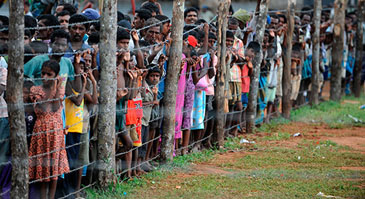The Seoul TimesGlobal ViewsSpecial Contribution By Heike Winnig
With the 18th amendment in his pocket and control of the Election Commission assured, President Mahinda Rajapaksa will remain president of Sri Lanka for life. With the Sri Lankan parliament’s passing of the 18th amendment empowering this man with utter and complete command of the small island nation, Sri Lanka’s tyranny and domination is unstoppable. Sri Lanka’s future is sealed. "Rajapaksa Looks to His New Era," published on Sept. 11, 2010 by Sudha Ramachandran on Asia Times Online, exemplifies that: "By its very definition, an executive presidency is anti-democratic. In Sri Lanka, it has been more so, as checks and balances have been steadily whittled away, enabling successive presidents to function in an authoritarian manner. This has prompted calls for abolition of the executive presidency." In September 2006, an opinion on The Hindu reported that Mumbai based think-tank, Strategic Foresight Group (SFG), has confirmed what many long feared: Sri Lanka has emerged as one of the most militarized society in South Asia. The study, "Cost of conflict in Sri Lanka," says the island nation has 8,000 military personnel per one million population. Even Pakistan, of which it is said that while every country has an army the Pakistan army has a country, has only half that number, 4,000 military personnel per one million capita. The figures for other South Asian countries are: Nepal 2,700; India 1,300; and Bangladesh 1,000. Sri Lanka also had the greatest military expenditure of gross domestic product (GDP). “Even among the conflict-afflicted countries there could be very few that have witnessed the level of militarization seen in Sri Lanka. The study has established a direct linkage between the ongoing ethnic conflict and the steep rise in defense spending.” For reporters and journalists, it still is one of the most dangerous places in the world. [ full story ] | ||

